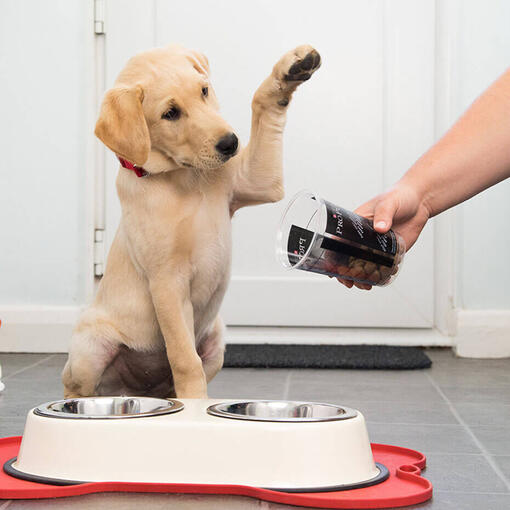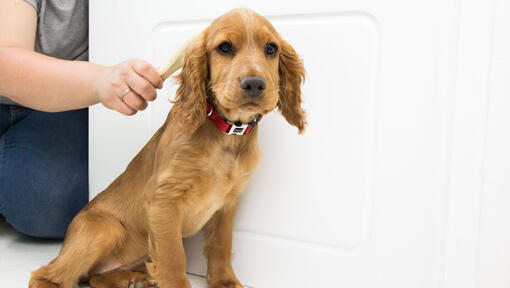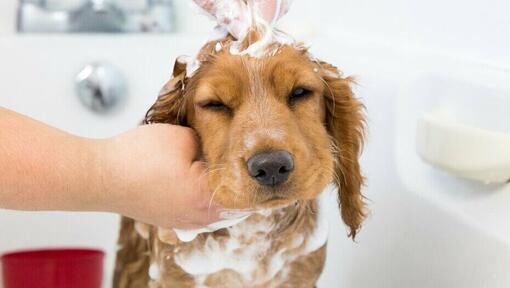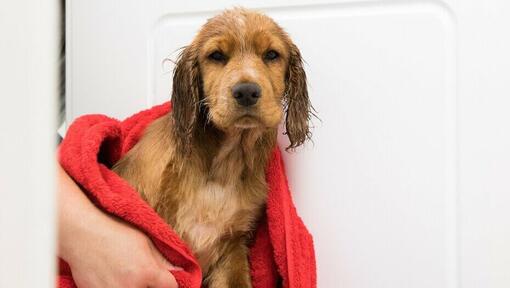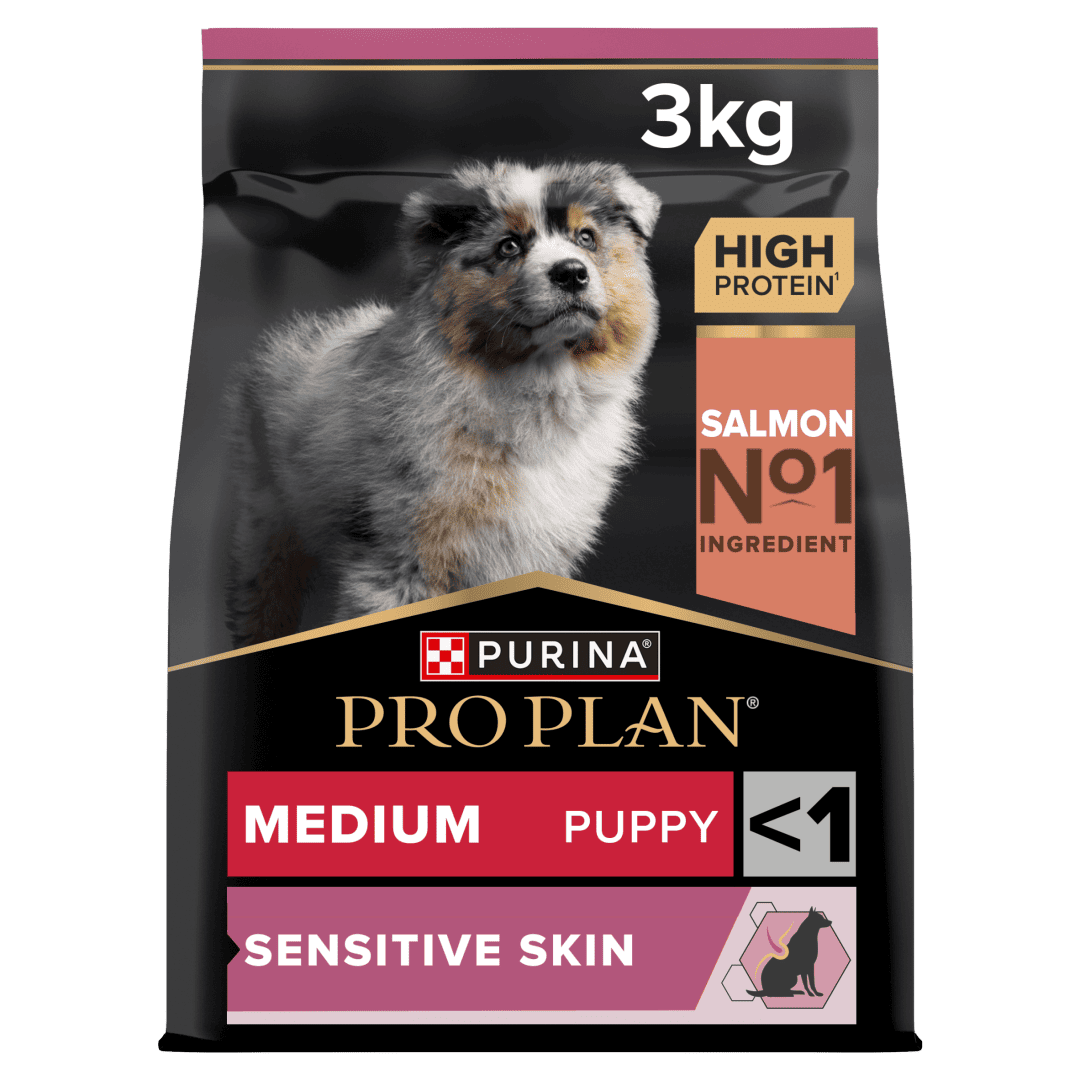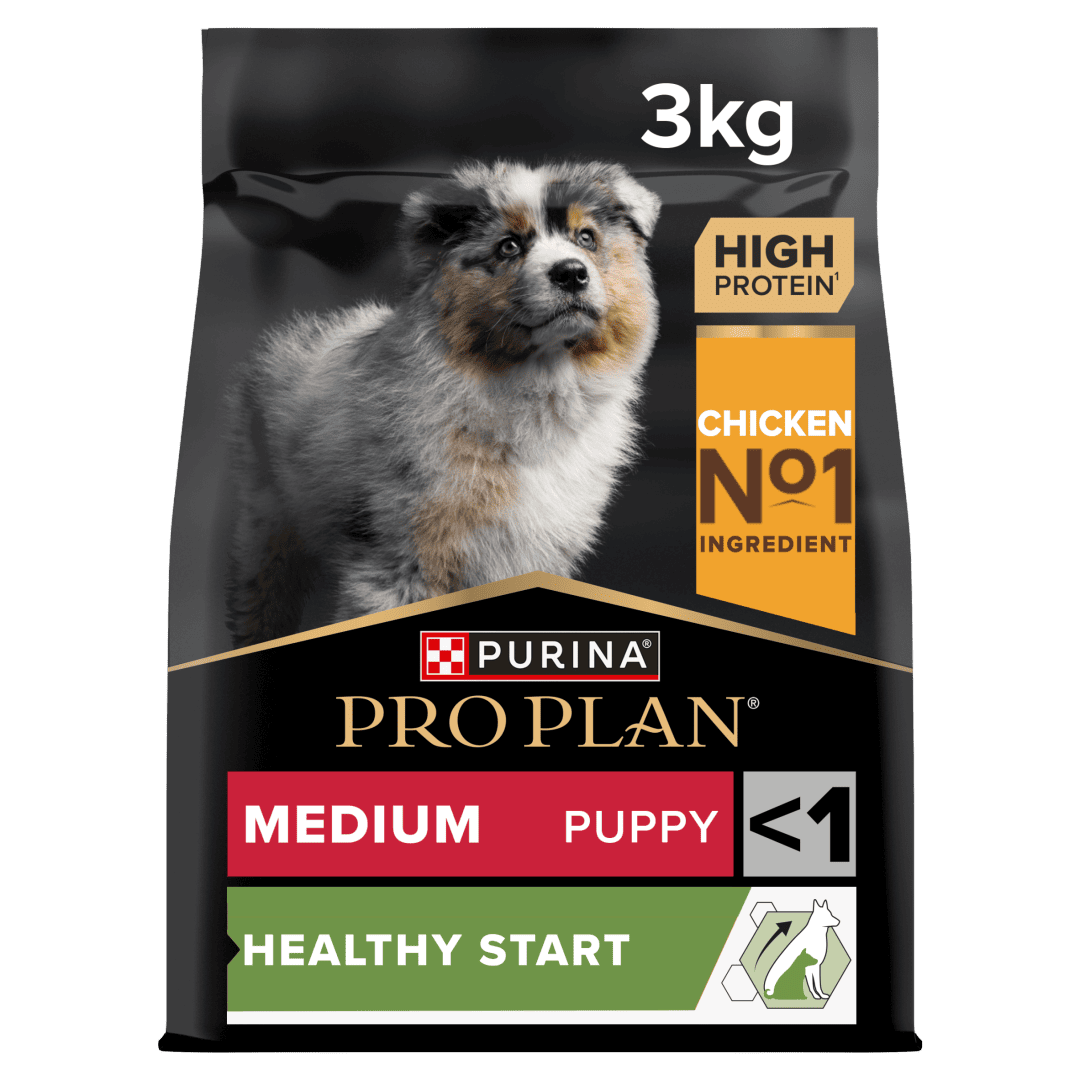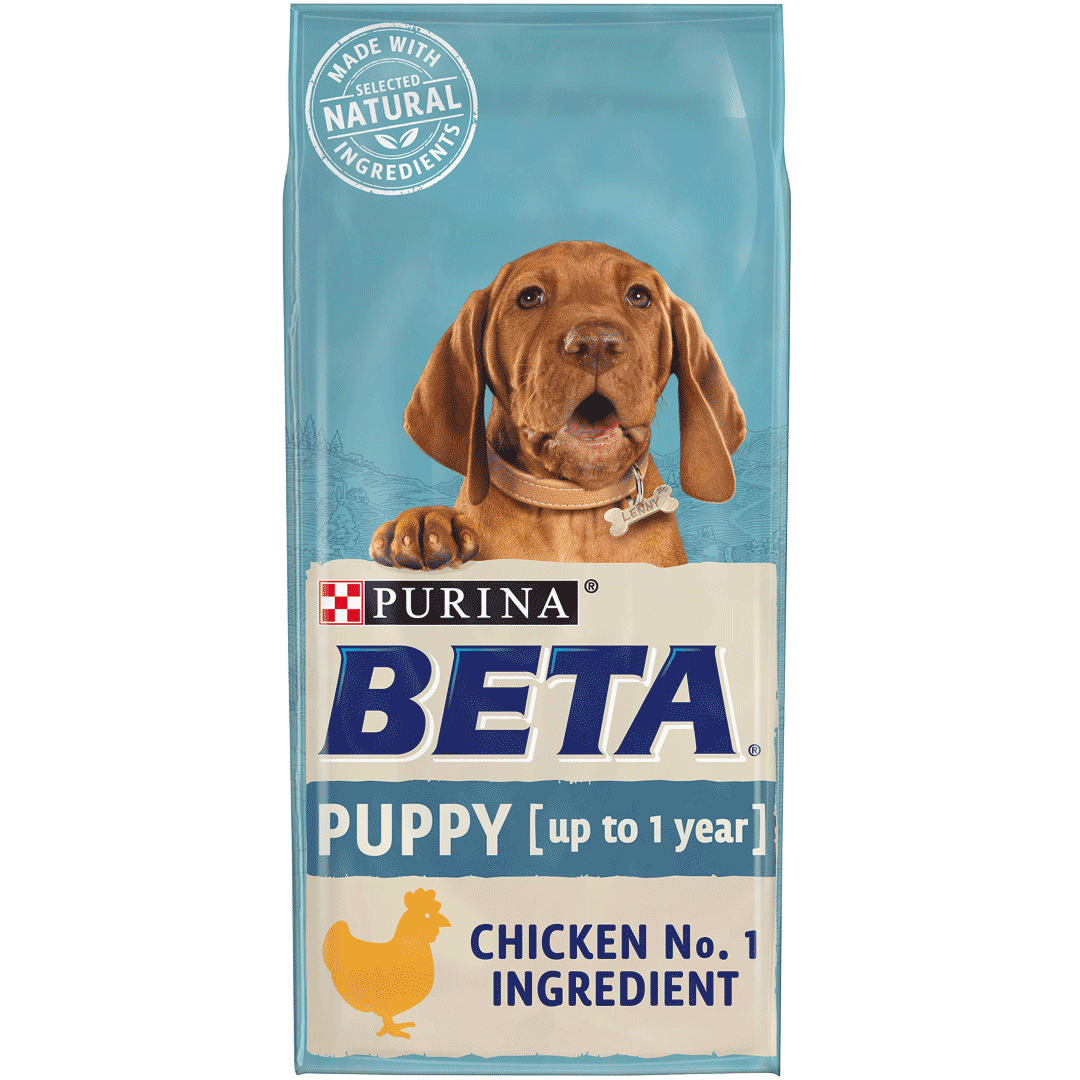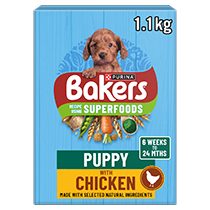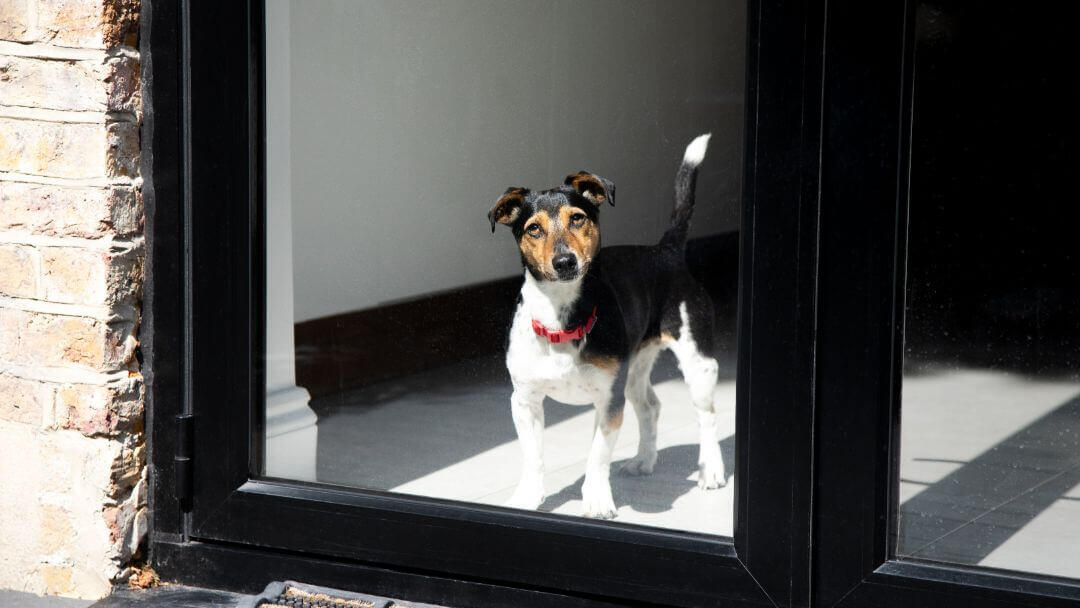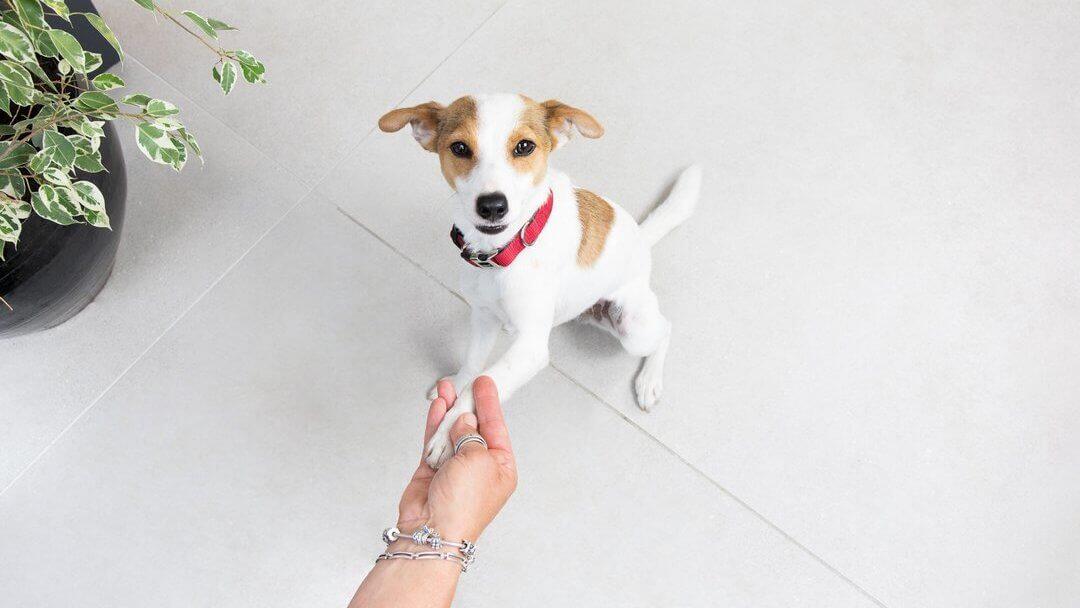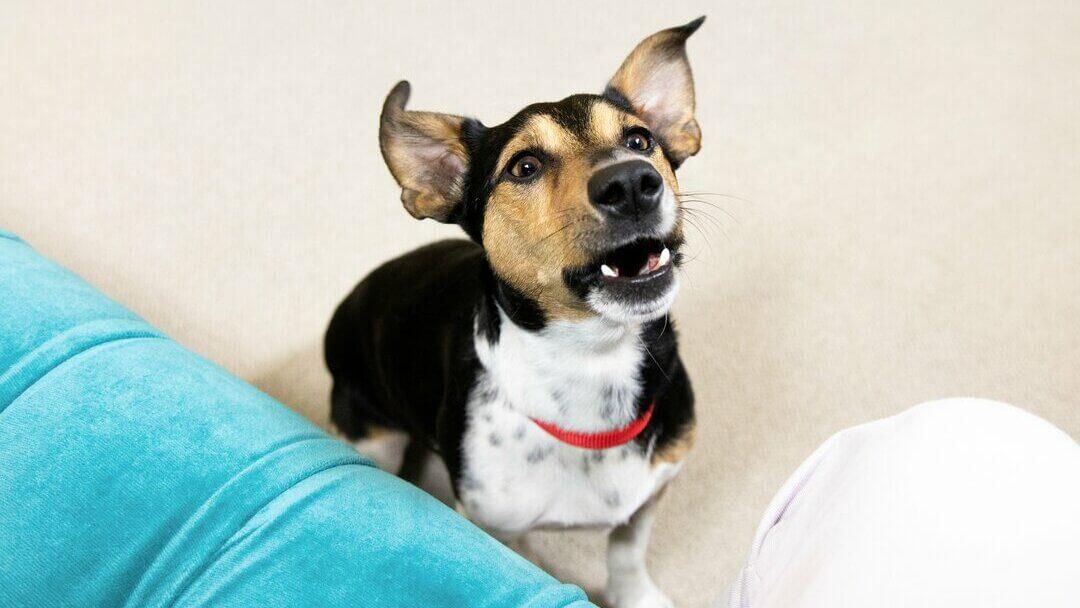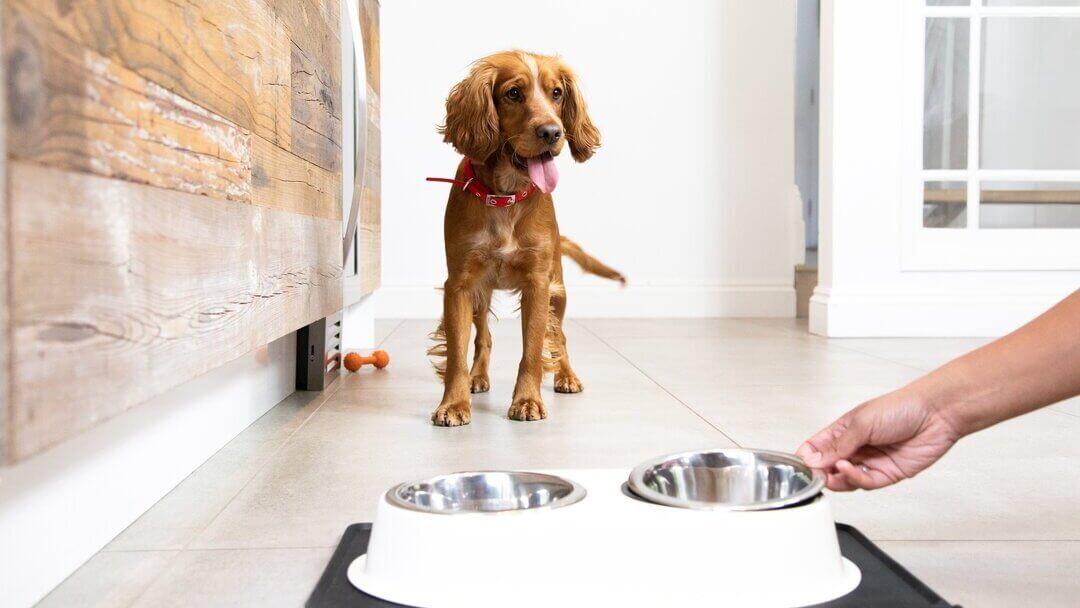

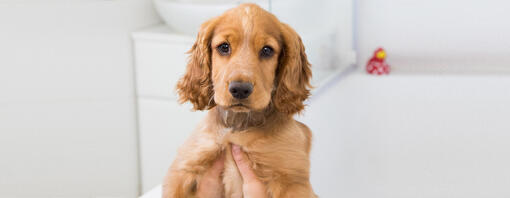
Bathing a puppy for the first time? Don’t worry! Here is everything you need to know.
From choosing the right shampoo and brush to wondering how often you can bathe your puppy, it’s normal to feel a little bit overwhelmed by all the bathing time decisions.
We’re breaking it down for you, step by step.
When can puppies have their first bath?
A puppy’s first bath ideally shouldn’t be until they’re about eight weeks old. This is because young puppies can’t regulate their body temperature and can easily become chilled. Holding off a puppy’s first bath is generally a good idea but they can be wiped over with a damp cloth if needed.
Once you’ve brought your puppy home, this is something you can begin to think about if you think your puppy needs it – although make sure you give them a few days to settle into their new home and feel safe and secure before you consider bath time.
How often should you bathe a puppy?
The answer is ‘whenever they need it’. This can change based on your preference, your dog’s needs, coat type and what they’re doing when they are out in the great outdoors As long as you’re using gentle, dog-specific shampoo, rinsing it properly, and drying them appropriately, it’s up to you.
What you will need for your puppy’s first bath
When you’re thinking about how to wash a puppy, you first need to have your shopping list. Here are the must-haves of puppy bathing time.
- Somewhere to bath your puppy. This could be a shower cubicle, a purpose-designed dog bath, or a wet room. Just make sure you have access to warm water, the flooring is non-slippery, and you aren’t in a cold area.
- Towels.
- Puppy shampoo.
- Coat conditioner for long haired dogs to prevent tangles.
- Suitable gentle puppy brush or comb.
- Hair dryer with a cool setting (and make sure you familiarise your puppy with this long before bath day).
- Plenty of treats.
- Ideally someone to help you.
How to bathe a puppy: Step-by-Step Guide
Bathing a puppy for the first time can seem daunting. Don’t worry – we’ve laid it out for you, step by step. Find out how to wash a puppy for the first time (and every time after that!) below:
1. Gently brush your puppy
Before bathing, give the coat a brush or comb to make sure there is no dirt in their coat and that it is free from any tangles and knots.
2. Get the water to the right temperature
This should be warm but not hot. Puppies will feel the heat far more than you will.
If you are using a shower hose, prepare this in advance, and make sure everyone else in the house knows not to use any water while you are bathing the puppy to prevent sudden temperature changes. Also prepare the puppy shampoo by mixing it with warm water as this will make it easier to spread throughout the coat and to rinse off.
3. Place your puppy in the bath
Gently place your puppy in the bath/shower. If you are using a special puppy bath, this should be inside your bathtub/shower cubicle. Make sure the surface they are standing on is non slip (use a rubber mat if necessary) as not being able to get their footing or sliding around can be really scary for a puppy.
4. Distract the puppy with a tasty treat
This is where a friend comes in handy - but you can also get treat holders/licky mats that stick to the wall and can provide a great distraction/reward.
5. Slowly soak your puppy’s coat in warm water
Be careful not to get water in their eyes or into their ears - and keep checking the temperature of the water. If you are doing this in a bath, don’t let the water level come any higher than halfway up their legs.
6. Prepare the shampoo
Spread the pre-mixed shampoo evenly on their body, legs and tail - taking care to avoid their eyes and ears.
Only use the minimal amount of shampoo you can so it is easier to rinse out.
Always read the label as some shampoos are concentrated and so need to be diluted far more.
7. Massage time
Using the balls of your fingers (never your nails - and if you do have long nails, wear soft gloves so you don’t scratch them), gently massage the shampoo into the coat so you can all the dirt and dust out - as well as being enjoyable for the puppy.
8. Rinse
It is important to rinse the coat of all shampoo once you have finished cleaning your puppy. You might need to do several rinses to make sure you’ve got rid of all of it.
If your dog has loose facial or body skin, use a damp cloth or baby wipes to get between the skin folds to make sure they are clean and soap-free - then make sure they are totally dry.
9. Drying your puppy
Wrap your puppy in a towel while still in the bath and rub them gently to remove the excess water - then put them on the floor (again, make sure it isn’t slippery), and stand well back!
When they come out of the bath, your puppy will automatically want to shake themselves. Your bathroom (and you) might get a bit wet, but it’s their instinctive way of getting rid of most of the water.
When they have done this, you can continue to towel dry them. Again, this is where having someone to hold them helps - or you can sit them on their knee on the floor to keep them secure and feeling safe.
Once they are towel dried as much as you can, you can begin to use the hairdryer. Ideally use a diffuser so the heat is spread evenly and only have it on a low, cool setting.
A hairdryer can be a bit scary so always go slowly and avoid blowing air at their face and ears. Try to get them as dry as you can - and with long-haired puppies, stop frequently to brush or comb through the hair to make sure it isn’t getting tangled. Very short haired dogs may be able to skip this step but make sure they stay warm until they are fully dry.
NOTE: You will have spent time getting your puppy used to the hairdryer before bath day!
10. Brush
Once you have finished bathing your puppy and drying them off, comb or brush them through thoroughly.
11. Treat time!
Last but not least, give your puppy one last treat as a reward - and go and have one yourself!
Top Tips for Bathing a puppy
- Introduce the hair drier long before bath day.
- Make sure the dryer isn’t too close to their skin, is not directed into their eyes and face, and keep the airflow cool/warm but very definitely not hot.
- When dogs get wet their natural response is to roll and rub their heads, necks and bodies on any available ground, including grass. To stop them getting dirty as soon as they’ve just been bathed, make sure all doors to the garden etc are closed!
- Small and thin-coated breeds get cold easily, so keep your puppy in a warm room until they’re completely dry.
- It is very important to rinse the shampoo and/or conditioner thoroughly as residue can make their coat itchy or dry.
- If needed, you can clean their inner ears using a specific dog ear cleaner (available from pet shops or your vets) but never put anything in their ear canals such as cotton wool or a cotton bud.
- Make bath-time a fun experience for you both - and if you can have a friend to help you the first few times, it will make it much easier.
How to get your puppy used to the hairdryer
If your puppy coat is very long or thick, they can take a surprisingly long time to dry so you are likely to need to use a hairdryer. Hairdryers can be quite frightening for a dog if they are not introduced properly so give you puppy a chance to meet the hairdryer long before bath day.
Find a quiet hairdryer. Often expensive ones that are high powered and come with high heat settings are the noisiest. Find one with a small motor that is less noisy.
You can start introducing it from an early age, initially just letting them hear the drier in the same room - maybe even when you are drying your own hair. This way the noise won’t be anything unusual for them.
Once they are happy with the noise, you can sit on the floor with it and let your puppy approach it slowly (first off, and later on at a low/quiet setting). From here, you can let them feel the air on their body - with lots of treats to convince them that there is nothing to worry about.
And that’s it – it’s as easy as that to bathe your dog! Now that you know how to bathe a dog, find out the best ways to groom your dog, next!



